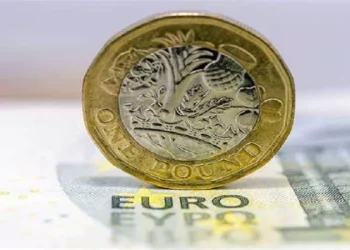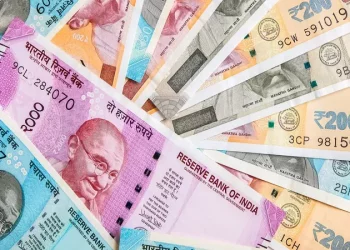The exchange rate between the US dollar (USD) and the Indian rupee (INR) is a cornerstone in the global financial edifice, embodying the economic interactions between one of the world’s largest economies and a rapidly emerging economic powerhouse. This currency pair is not just a numerical representation but a dynamic indicator that reflects the relative economic strength, monetary policies, and market sentiment of the United States and India. This article will comprehensively explore the USD – INR exchange rate, delving into its fundamental concepts, the forces driving its fluctuations, historical trends, and its current standing in the international financial arena.
Understanding the Basics of the USD – INR Exchange Rate
Defining the Exchange Rate
The USD – INR exchange rate specifies the quantity of Indian rupees needed to obtain one US dollar. For example, if the rate is 83.00, it means that 1 US dollar can be exchanged for 83 Indian rupees. This rate is determined by the supply and demand dynamics in the foreign exchange market, which operates continuously across different time zones globally. The market participants, including banks, financial institutions, multinational corporations, and individual traders, engage in buying and selling these currencies, and their collective actions shape the exchange rate.
The Role of the Foreign Exchange Market
The foreign exchange market is the largest and most liquid financial market in the world, with daily trading volumes reaching trillions of dollars. The USD – INR pair is among the actively traded currency pairs in this vast market. The continuous flow of transactions in the market reflects the diverse needs of participants. Multinational corporations use the market to facilitate international trade, converting revenues earned in one currency to another. Financial institutions trade currencies to manage their foreign exchange exposure and seek profit opportunities. The constant interplay of these activities results in the ever – changing USD – INR exchange rate.
Factors Influencing the USD – INR Exchange Rate
Interest Rates
Interest rates set by the central banks of the United States and India play a crucial role. The Federal Reserve (Fed) in the US and the Reserve Bank of India (RBI) determine the interest rate levels in their respective economies. When the Fed raises interest rates, US – denominated assets become more attractive to global investors. Higher interest rates mean greater returns on investments such as US Treasury bonds and savings accounts. As a result, there is an increased demand for US dollars, causing the dollar to appreciate relative to the Indian rupee. Conversely, when the RBI raises interest rates in India, Indian assets may become more appealing, potentially increasing the demand for rupees and strengthening the rupee against the dollar.
Inflation Rates
Inflation differentials between the US and India have a significant impact on the exchange rate. If the inflation rate in the US is higher than that in India, the purchasing power of the US dollar decreases. This makes US goods and services relatively more expensive compared to Indian ones. Consequently, international demand for US exports may decline, reducing the demand for US dollars and leading to a depreciation of the dollar against the rupee. On the contrary, if Indian inflation exceeds US inflation, the rupee may weaken as the cost of Indian goods and services rises relatively.
Economic Growth
The economic growth trajectories of the two countries are key determinants of the exchange rate. A robust economic growth in the US, characterized by expanding industrial production, increasing consumer spending, and growing business investments, signals a healthy economy. This attracts foreign investors who need to buy US dollars to invest in US – based assets, driving up the value of the dollar. Similarly, strong economic growth in India, with its booming information technology sector, expanding manufacturing base, and growing domestic consumption, makes the country an attractive investment destination. As investors pour capital into India, they buy rupees, which can lead to the rupee strengthening against the dollar.
Political Stability
Political stability is essential for maintaining a stable currency value. In the US, political events such as elections, changes in government policies, and geopolitical relations can influence the dollar’s value. Uncertainty arising from political turmoil can lead to a decrease in the demand for dollars. In India, political stability and the effectiveness of government policies also play a vital role. A stable political environment gives investors confidence, which can support the value of the rupee. For example, smooth policy – making processes and stable government leadership in India can enhance investor trust and contribute to the rupee’s stability.
Balance of Trade
The balance of trade, which is the difference between a country’s exports and imports, affects the USD – INR exchange rate. If the United States imports more goods and services from India than it exports to India, there is a higher demand for rupees as US importers need to acquire rupees to pay for Indian goods. This increased demand can lead to an appreciation of the rupee. Conversely, if India imports more from the US, the demand for dollars will rise, putting upward pressure on the dollar’s value.
Historical Trends of the USD – INR Exchange Rate
Long – Term Movements
Over the long term, the USD – INR exchange rate has witnessed significant fluctuations. In the past few decades, the Indian rupee has generally trended towards depreciation against the US dollar. This trend can be attributed to factors such as India’s growing import – intensive economy, differences in economic growth rates between the two countries, and monetary policy divergences. However, there have been periods of relative stability and even short – lived appreciations of the rupee, influenced by specific economic events and policy changes.
Short – Term Volatility
In the short term, the USD – INR exchange rate can be highly volatile. News events, economic data releases, and central bank announcements can trigger sudden and significant changes. For instance, if the Fed makes an unexpected statement about its monetary policy or the RBI announces a change in interest rates, it can lead to immediate reactions in the foreign exchange market. Traders and investors closely monitor such events, and their subsequent buying and selling activities cause the exchange rate to fluctuate rapidly within short periods.
Current State of the USD – INR Exchange Rate
As of current date, the USD – INR exchange rate stands at current exchange rate. This rate is subject to constant change due to the dynamic nature of the influencing factors. Market participants, including investors, traders, and businesses, closely follow economic indicators, central bank actions, and geopolitical developments to anticipate movements in the exchange rate. This information helps them make decisions regarding international trade, investment, and currency – related strategies.
Conclusion
The US dollar – Indian rupee exchange rate is a multifaceted and ever – evolving metric that serves as a barometer of the intricate economic and geopolitical relationship between the United States and India. This currency pair is not merely a numerical value on a financial chart; it is a living representation of the constant interplay between two diverse economies, each with its own set of strengths, policies, and market dynamics.
For international investors, the USD – INR exchange rate is a critical factor in portfolio construction and risk management. A nuanced understanding of its underlying determinants allows investors to identify opportunities for profit and safeguard their investments against currency – related risks. When the Federal Reserve tightens monetary policy, leading to higher US interest rates, it often attracts a flood of global capital, including from Indian investors seeking better returns. In response, investors may rebalance their portfolios, increasing their exposure to US – denominated assets such as stocks, bonds, and real estate. Conversely, positive economic developments in India, such as the implementation of favorable regulatory reforms or strong corporate earnings, can make the rupee more attractive, prompting investors to adjust their holdings accordingly.
Related topics:




























